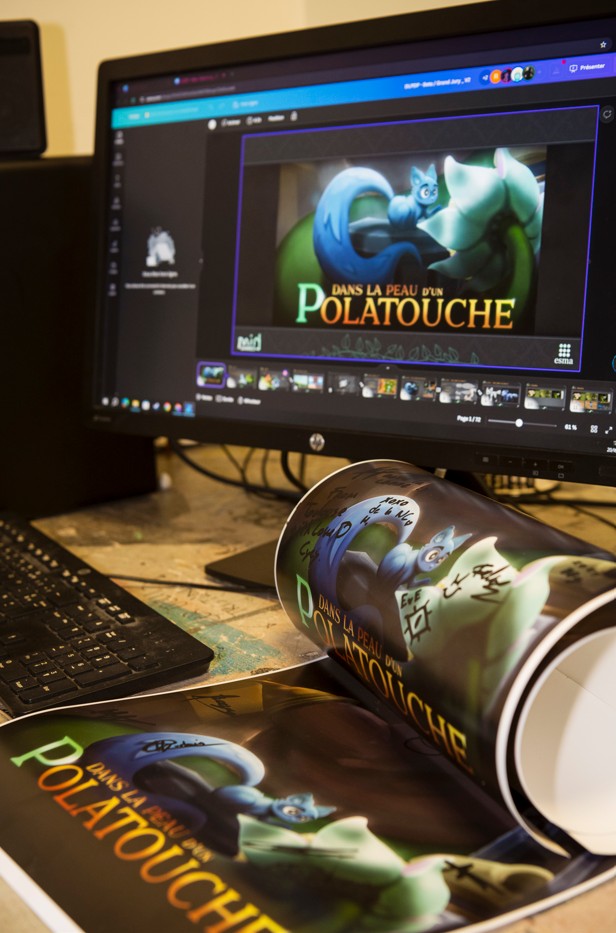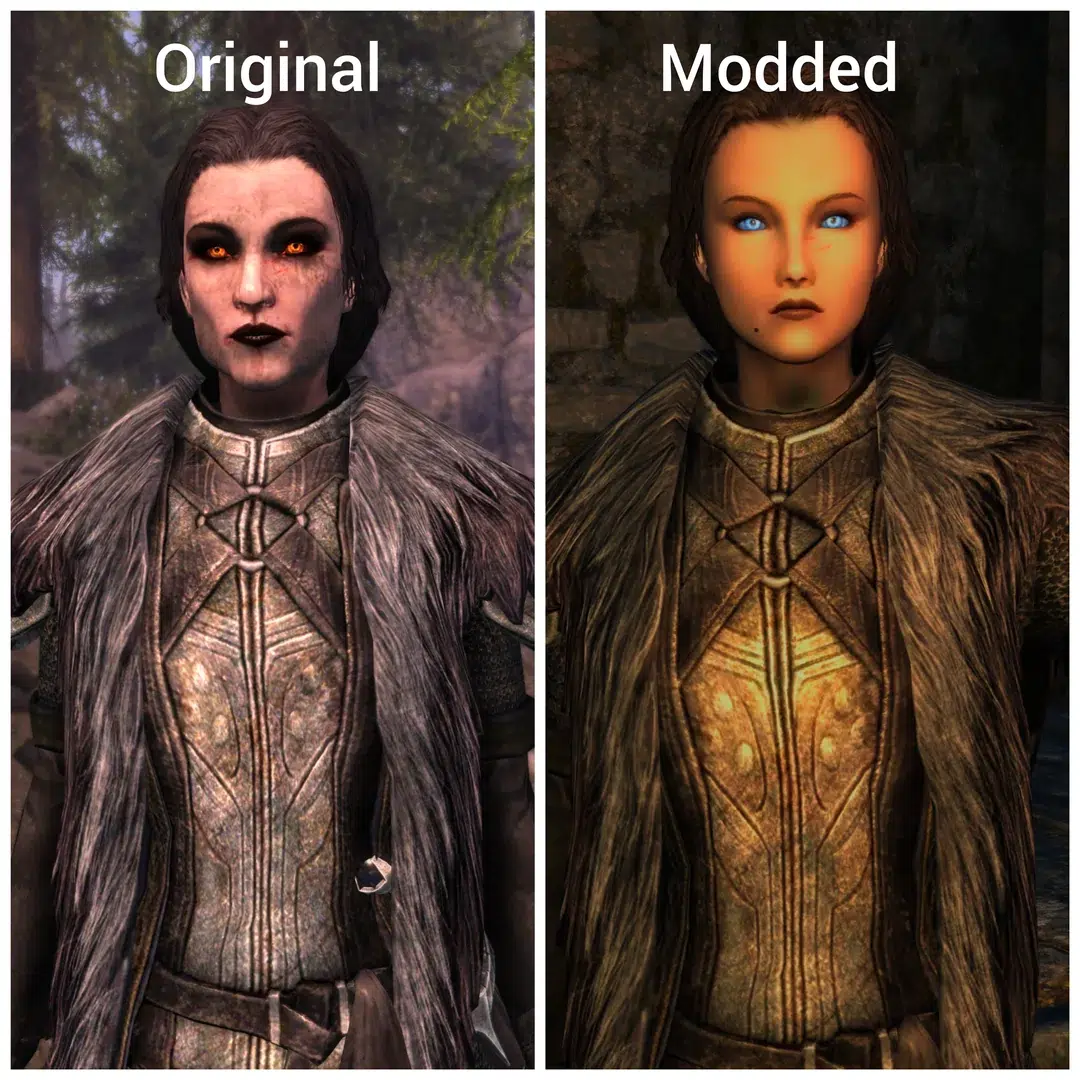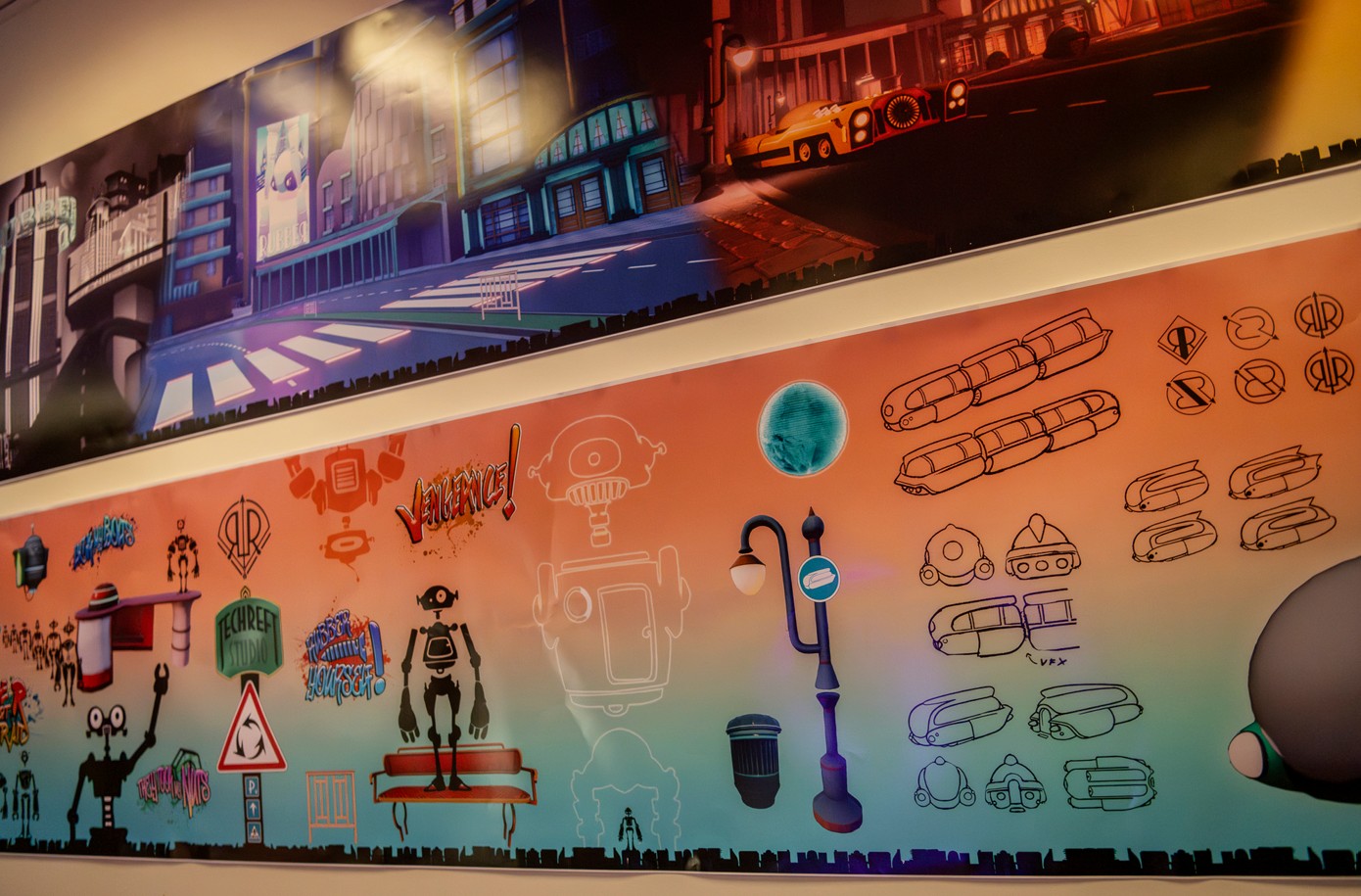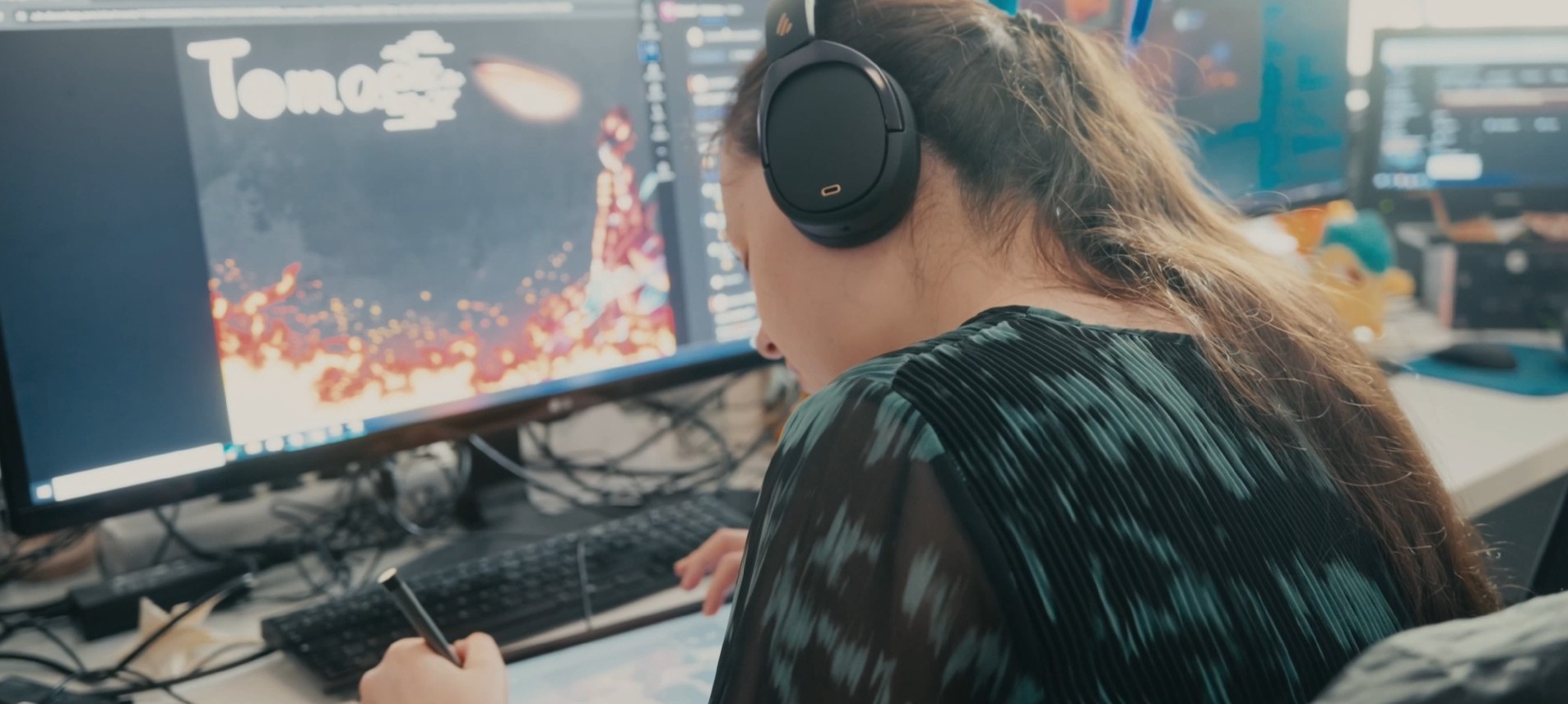What is a game design portfolio and what is it used for?
The game design portfolio is a synthesis of what best represents the game designer’s experience and skills. In this sense, it’s an essential tool for making yourself known to studios, being able to pitch your skillset to a new client or simply being identified within the video game industry.
At a time when artistic excellence and technical mastery are prerequisites for entering a sector at the cutting edge of technology and entertainment, being able to be clearly and precisely identified is crucial, and that means presenting a portfolio.
What do you need to include in your portfolio to stand out in game design?
To stand out in a competitive and constantly evolving sector, a game designer’s portfolio needs to make an impact.
Your portfolio must quickly and effectively convince the person who sees it, and be representative of your professionalism, your technical mastery and your artistic level – three essential criteria on which recruiters will assess you.
“Less is more”, as we say in Shakespeare’s language, and that’s why it’s a good idea to concentrate on the projects that are most representative of your skills.


Complete games
It’s very important to be able to offer playable projects, even if they’re small-scale.
This is where recruiters can get an idea of your ability to bring projects to fruition, even if they are student projects or games from game jams.
Here’s an example of the end-of-studies game“Dans la peau d’un Polatouche,” created by ESMA students, class of 2024: a single-player, third-person 3D platformer in which you play as a flying squirrel, the hero of the tale in which he evolves.
Why not prototypes?
If integrating a complete game is not an option, integrating prototypes remains a good way of showcasing the game designer’s skills and mastery of game mechanics.
This is all the more true when the future game designer, having enrolled at a video games school, is still in the process of training. A well-thought-out portfolio will enable its creator to boost employment opportunities once they have finished their studies, and to be easily noticed by professionals in the sector.
Modding experiences
For a junior game designer, being able to showcase mods made on big-name games is a way of proving their ability to work with existing tools and systems, which is essential for recruiters at major studios.
Mods made for games like Minecraft, Skyrim or Counter Strike, provided they are of a high quality, can be great business cards for getting you into the world of video games.

Past collaborations
For both professionals and students, it’s essential to showcase the work you’ve already done. And it’s not necessarily experience with large, well-known companies that will add the most credibility to your portfolio. Highlight the projects that best reflect your talents as a game designer, whatever the size or prestige of the companies or studios involved.
In these different experiences, you can make the most of both your ability to work independently and your ability to integrate into teams, from Game Jam to large-scale productions, where the rigour, pace of work and professional level will be recognised by recruiters.
That’s why it’s so important to have a portfolio that’s regularly updated, editorialized and finely calibrated.
What format should you choose to present your game design portfolio?
To build your portfolio, you need to be able to put yourself in the recruiters’ shoes, looking for information that is both succinct and precise.
Dividing your portfolio by project and prioritising information are therefore two essential parameters, without forgetting to illustrate these experiences with numerous visuals, video content and links to playable content. In short, a game designer’s portfolio should reflect the image of their work: impactful, solid and easy to navigate.
For this, a personal website on which each project has its own page is undoubtedly the most professional tool, but there are options on dedicated platforms that can also enable game designers to create a professional portfolio without having to create their own website.

Mistakes to avoid when creating your game designer portfolio
Mention all your projects without exception
As we mentioned earlier, the portfolio needs to make an impact, and listing too many projects is not necessarily the best strategy for creating a portfolio that will make a lasting impression on recruiters. The best portfolio will be one that, in the space of a few projects, highlights the game designer’s skills in all the areas in which they are proficient, without necessarily spreading themselves too thin.
This will also make it possible to focus the portfolio on projects where the game designer has had a real impact, while avoiding taking credit for games or projects with little added value. This would give the wrong impression of the game designer’s real skillset.
Too much text… and not enough
In the industry, we say “show, don’t tell”. Show your skills, be direct and visual. A portfolio shouldn’t be seen as the romanticised career of a game designer, but as a demonstration of your experience, professionalism and versatility.
Conversely, you must also be careful not to say too little. For each project, you should clearly explain the role, the intentions, the process and the challenges met. A single link to a game or a project without any contextualisation does not give a good impression of your work, just as a long text without visuals risks discouraging recruiters.
Your most difficult projects can also be great experiences to share. Use them to demonstrate your ability to solve complex problems, explain the iterations and solutions you have put in place, and take this opportunity to demonstrate your adaptability.
For example, you could highlight one of your projects and develop it in the style of a case study, more detailed than your other pages. Whether you’re a junior or an experienced game designer, developing your experience on a tricky project in more detail can highlight your strengths and your professionalism in all circumstances. And in doing so, make your profile even more attractive to recruiters.
A portfolio without regular updates
What you should avoid at all costs as a game designer is presenting a portfolio with inactive links, unavailable content or content protected by passwords. This shows a lack of professionalism, even if the game designer is currently working on a number of projects.
So it’s best to keep your project pages simple but effective, even if it means updating them as soon as necessary.
This will showcase the range of skills that Game Designers have, as well as their career development and the progress of the projects they are working on.
Examples and inspiration for game design portfolios
Browsing the dedicated platforms is a good way of discovering the extent of the sector and its dynamism, especially when it comes to independent video games.
Itch.io is an essential platform, both for showcasing your playable creations and for documenting and inspiring you as you build your portfolio. For example, you can browse the portfolio of Angelo Pinho Dos Santos, a former ESMA student who is now a Technical Game Designer at Ubisoft. He himself has used the Itch.io platform to showcase his past experiences, his training and the AAA games he has recently worked on.
These include Star Wars: Outlaws, XDefiant and Riders Republic. A fine example of selection, since it highlights three very different types of game, proving the versatility of the game designer presented here.

Thanks to the flexibility of the platform and the customisation options it offers, Angelo Pinho Dos Santos has also been able to add visuals, extracts and video clips as well as playable versions of some of his creations to his portfolio, along with a contact sheet so that recruiters can easily get in touch with him if necessary. An example of a successful portfolio, and a career already well on track.
In addition to this portfolio, don’t hesitate to take inspiration from the innovative practices of certain game designers, who sometimes go so far as to create their portfolio in the style of a video game, either through coding or by using video game creation tools.
In this way, they can showcase both their technical skills and their inventiveness, while at the same time highlighting their experience and presenting the projects on which they have collaborated. A video portfolio, like a showreel, is also a good way of standing out to recruiters, as long as it is of professional quality.
What tools and platforms should I use to create a game designer portfolio?
Today, there are many ways to build a portfolio as a game designer.
If you opt for a website, tools such as Wix, Webnode, Squarespace or WordPress are very easy to learn and use, and allow almost infinite customisation, while offering accessible and professional templates.
At the same time, or depending on the time available, profiles on dedicated platforms such as Artstation or Itch.io are just as interesting for game designers, whether students or professionals.
These platforms are regularly used and consulted by studios for recruitment purposes, and both their highly visual approach and the ability to host interactive content on them enable them to showcase all the game designer’s skills.
